
by admin | Feb 20, 2018 | In My View, Show Case
The glitz and glamour of the fashion world, and on the other hand, some women whose life and memories have sunk into the deepening darkness. These are the two poles that Suchismita Dasgupta bridged recently.
Suchismita DasGupta is a well-known name in the fashion industry. From accountancy, she moved onto the creative pastures with complete elan. This time she chose to use fashion as a weapon to spread social awareness and message about mental ailment.
To raise funds for a voluntary NGO, Nextiles, Suchismita’s brand, showcased it’s wares on models who were far from the dazzling models who regularly scorch the ramp.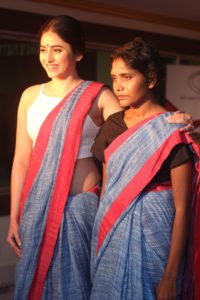
What exactly did you do in this Fashion Show? This was the first that Nextiles took part in a ramp show, isn’t it?
A friend of mine is a psychiatrist and she runs an NGO, where she treats homeless, shelter-less mentally unstable women. She has a shelter, where she brings them to treat them. Some, after being treated leave for their home, and some women stay on. There are lots of times when their family members don’t want to take them back also. It is during these times, that this organisation tries to teach them to be independent in doing small crafts or other works.
Yes, this was the first time Nextiles participated in a ramp show, because I believed that this occasion called for it.
How did making the twain of glamour and glitz of the fashion world and the mentally depressed women come together?
It may seem that they are completely different and on opposite poles, but having been associated with fashion fraternity for a very long time, I know how people can go into depression, when things don’t go in their ways, or an assignment doesn’t land up their way. Look at Dipika Padukone. She had the guts to come out in the open and admit the phases of depression she had been into. So I felt it was the perfect platform to bring out how anyone, I mean any one amongst us, who can also suffer from depression or mental instability.
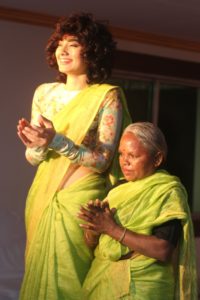 Did you have any special prep or colour palette in mind when you thought of doing this?
Did you have any special prep or colour palette in mind when you thought of doing this?
There wasn’t any preparation. I just thought of the Vibgyor. The Rainbow comes after rain, bringing glimmer of hope and happiness. Thus, I chose the Rainbow colours and White. In fact, the doyens of the fashion and modelling industry came out to help me in this noble effort. Aniruddha Chakladar did the make-overs, well-known celebrated models like Swastika Mukherjee, Reshmi Ghosh, Riddhima Ghosh, Sauraseni Maitra, Puja Gupta and Sneha Ghosh all came forward to what we called #walkwithaview. The actors and models all walked with the residents, making this a one-of-a-kind evening.
My friends, Neel B Mitra, Aditi Roy, Sudarshana Ghosh & Purba RayChaudhuri had been of immeasurable help in mounting this whole act together, and I wouldn’t have been able to pull this off without them probably.
I am also thankful to Arko, Shamik and Ritoban…. Of Fiddlers Green, The MIlliputs, Rana Sarkar and Aahar for having come forward to help this cause.
Would you like to be associated with such NGO s in the future?
Since this was an organisation which I knew about and they had approached me, I took the plunge of doing this for the first time. Of course, if such opportunities arise in the future, I would like to do it with smaller organisations.
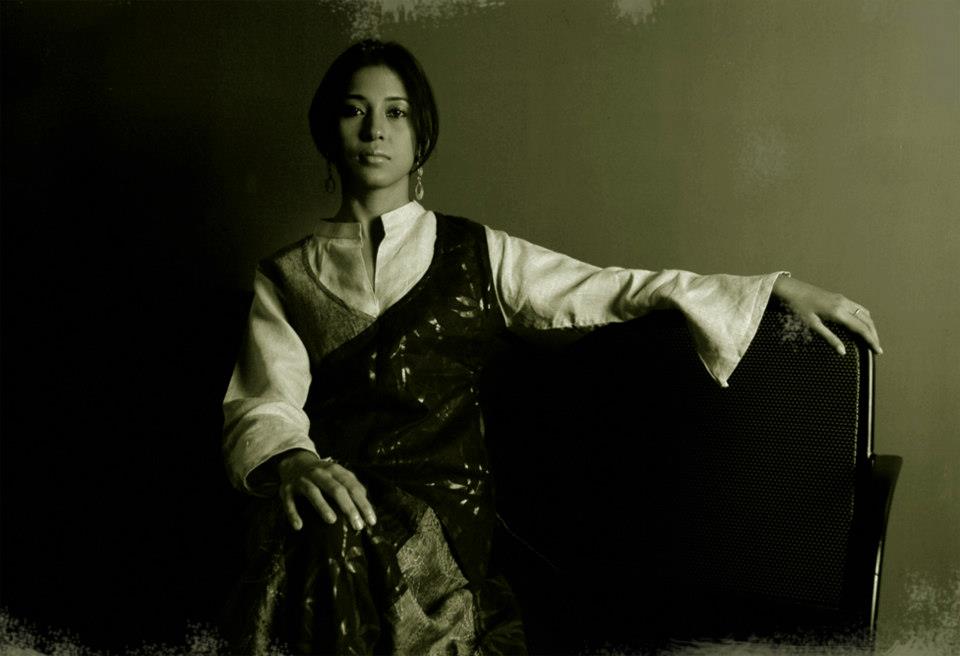
by admin | Nov 21, 2017 | Fashion To Me, In My View
Art inspires art..
Great art has a way of inciting creativity and moving one to explore their own imagination and aesthetics. Suchismita’s creations often reflect her love for art and design.
The Art Nouveau movement, that combines exquisite craftsmanship with innovative forms and materials has always been a source of inspiration for Suchismita, prompting her to create a style that is distinct in it’s flamboyance and freedom.
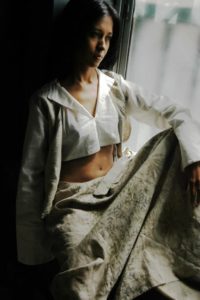 Specifically, Gustav Klimt’s ethos of mystery and sensuality has played a prominent role in Suchismita’s creations.
Specifically, Gustav Klimt’s ethos of mystery and sensuality has played a prominent role in Suchismita’s creations.
A masterpiece of Klimt’s Golden Phase is the portrait of Adele Bloch-Bauer I, one of Klimt’s greatest achievements, in which gold has been used in a variety of contexts. The painting embodies opulence. The subject seems to become one with her glowing surroundings, yet a distinctive figure emerges from the profusion of decorative motifs. Adele appears as a modern, complex woman, her intelligence as evident as her sensuality. Her hands are folded in such a way as to conceal a deformed finger, yet the gesture only adds to her mysterious grace.
Adele Bloch-Bauer was the only woman portrayed twice by Klimt in a full length portrait. It has long been speculated that she and Klimt had a love affair, and that Adele Block-Bauer I contains visual clues about their relationship. These include the numerous open-eye and almond shapes in the painting, which have sexual connotations. In addition, the subject is portrayed with great tenderness, and is ennobled by her regal setting.
The layers of fabric and elaborate motifs together with the simple cuts of the gown inspired her to create a line of linen ensemble. Adele’s gown is painted with gold leaf and many motifs, the gold giving it a magnificent richness.
Suchismita desired a similar richness on linen, she printed the fabric with a unique binding technique that gave out a perfect sheen. Linen looked lustrous. The cuts were meant to be strong, yet very subtle. The motifs run a pattern, right through the ensemble, adding the quirk which Suchismita is known for. She combined different fabrics, playing around with texture and patterns to bring out the subtle whimsical distinction in the collar, the layers, the sleeves – all adding to a unique elegance that puts Suchismita’s collection a class apart.
Says Suchismita, “as a designer, I feel that everyone has a different style pattern which can not only be expressed by the use of different colours that suit the profile, but patterns.”
The unconventional and inventive play of lines and patterns has been expressed in creating a collection that spells elegance, charm, mystery and sensuousness.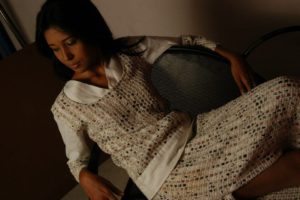
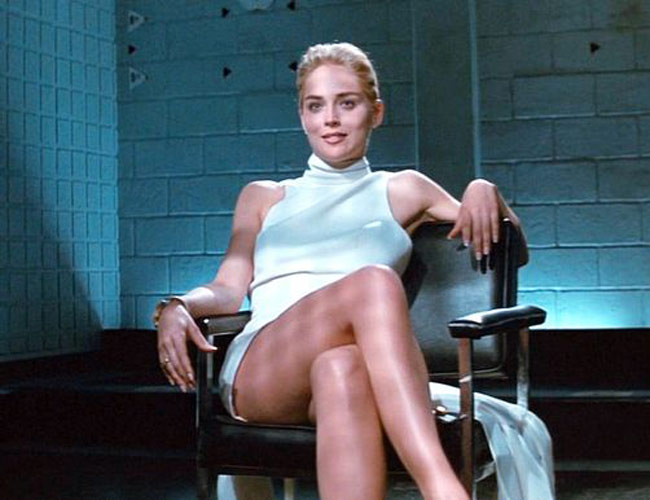
by admin | Oct 17, 2017 | In My View
“Women think of all colours except the absence of colour. I have said that black has it all. White too. Their beauty is absolute. It is the perfect harmony.” 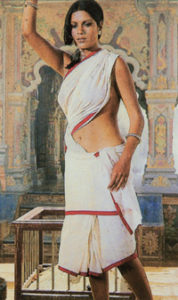 said the famous designer Coco Chanel.
said the famous designer Coco Chanel.
I have often been bemused and have seen that White and women… These two words have almost always been connected to each other. They have been the colours which has portrayed purity and virginity! The biggest irony is also, these two words, conversely have also probably been only attached to Women and White!
White has been the colour of Asexuality throughout the world, throughout centuries. From the bride’s clothes in Christianity to widow’s clothes in Hinduism; it has always been white! It’s interesting in fact, cause both the traditions, despite the logical reasoning and religious ones too differing; had the same cause.
In a patriarchal society, virginity has always been held in high esteem and has been considered to be very important from the marital aspect. But mind it… only when the bride is concerned. The virginity of the bride was important in order to ensure that she didn’t have a past, so that no one else had a claim in the family fortune.
By this same logic a Hindu widow must be without sex; to ensure that no future claimant came to lay a claim to the family fortune! But virgin brides and widows became almost myths and were looked at some of the biggest objects of desire.
In Indian cinema, each time we have wanted to make the heroine appear ‘pure, fragile’ and wanted, we had her wearing something in white in her introduction scene. Each time we depict a woman as vulnerable and thus very sexy in this patriarchal society, we put her in white. Remember Pooja Bhatt in Dil Hai Ke Maanta Nahin, or remember Zeenie baby in Satyam Shivam Sundaram or the classic case of Madam Mandakini under the frothing waterfall!

In this context, I must mention some western movies as well. Remember ‘Bridges of Madison County’? When you think of Meryl Strip in her beige chinos and white shirt, working in the field, a committed and married woman in her middle age; who has almost no sex life. But her vulnerability must be depicted by white. Think Mike Lee’s ‘Secrets and lies’ where they use white as the defining colour as to sex and lack of it.? Also remember Julia Roberts in Pretty Woman, where her wardrobe ranges from coloured ones to a gradual white, as her persona undergoes a change.
Red, black etc on the other hand, have always been associated and thought to be more predictable colours for sex and sexual predators. They have been colours for women who knows what she wants and knows how to get it! Contrarily, Sharon Stone in Basic Instinct, plays the sexual predator in a little white dress. But then contradictions are the only thing constant, aren’t they?
But then a patriarchal society doesn’t like women to be in control; so they must be damsels in distress and must be pure, innocent (and of course virgin) and therefore must need a saviour.
Thus over centuries and amidst all religion, white has remained intrinsically connected with sex or the lack of it thereof.
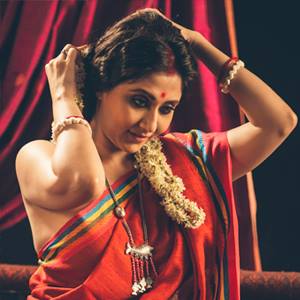
by admin | Sep 22, 2017 | Fashion To Me, In My View
It’s again that time of the year and Durga Pujo is just around the corner. Durga Pujo to Bangalis have always been a glorious time, when families come together and there have been fun, frolick and lot of fashion thrown in between…. Thus to me Durga pujo has always been associated with lip-smacking food, fabulous fashion and a lot of pure and clea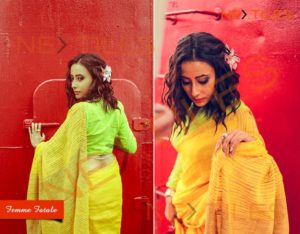 n fun!
n fun!
Who can get over the nostalgia or the attraction of having that cutesy good-looking guy looking at you with admiration? Or comparing notes with what the most fashionable friend is buying for the Pujo? Hours of thinking up entire ensembles for the four days had been absolute must while growing up.
While I was growing up, in that era; pujo fashion used to be ruled by films! Remember, MPK salwar kameez, that BHagyashree wore? Or that Cap that Salman sported? Even prior to that I have heard that UttamKumar in his heydays was the trend setter with his Guru Panjabi!
Despite the fashion scene being ruled by lot of Lehengas,Salwar Kamiz es or fusion dresses, to m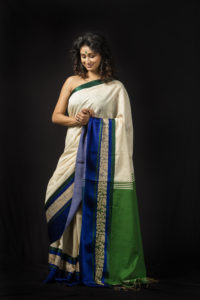 e , saree always took the foremost place specially for ashtami anjali and bijaya dashami immersion/bhashan… rest of the days would depend on whatever was in vogue. But since childhood, I have always preferred tailor made clothes, choosing the particular cuts, collars and their detailing by myself. That is probably why, as a designer too I believed in developing a personal style than following fashion blindly.
e , saree always took the foremost place specially for ashtami anjali and bijaya dashami immersion/bhashan… rest of the days would depend on whatever was in vogue. But since childhood, I have always preferred tailor made clothes, choosing the particular cuts, collars and their detailing by myself. That is probably why, as a designer too I believed in developing a personal style than following fashion blindly.
With the onset of globalization and with the advent of local and international brands, puja fashion has changed rapidly in the last 2 decades. But what has remained constant in these changing times, is the love and passion for dressing up during Pujo.
My favorite has always been saree from shoshthi to dashami. As much as I may wear casuals the year round… Pujo have always managed to bring out the traditionalist and conformist in me. I have Chosen lighter colour palettes and cottons, linens and other light fabrics for day wears and heavier materials have been kept aside for the evenings.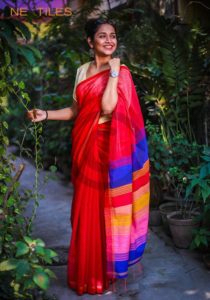
But these are just my fashion aesthetics, and it definitely doesn’t mean that saree is the only go-to attire for pujo. My one suggestion would be, that whatever you decide to wear – Indian, Western or Fusion; choose your attire carefully, keep the occasion in mind, don’t over dress and don’t underdress either. Just Don’t follow fashion blindly! Apart from the traditional white and red the colours which are trending this season are yellow and fuchsia. Use accessories and make up judiciously and create a look that’s uniquely you.
Make a style statement for yourself. Be a Diva .
Happy Pujo!
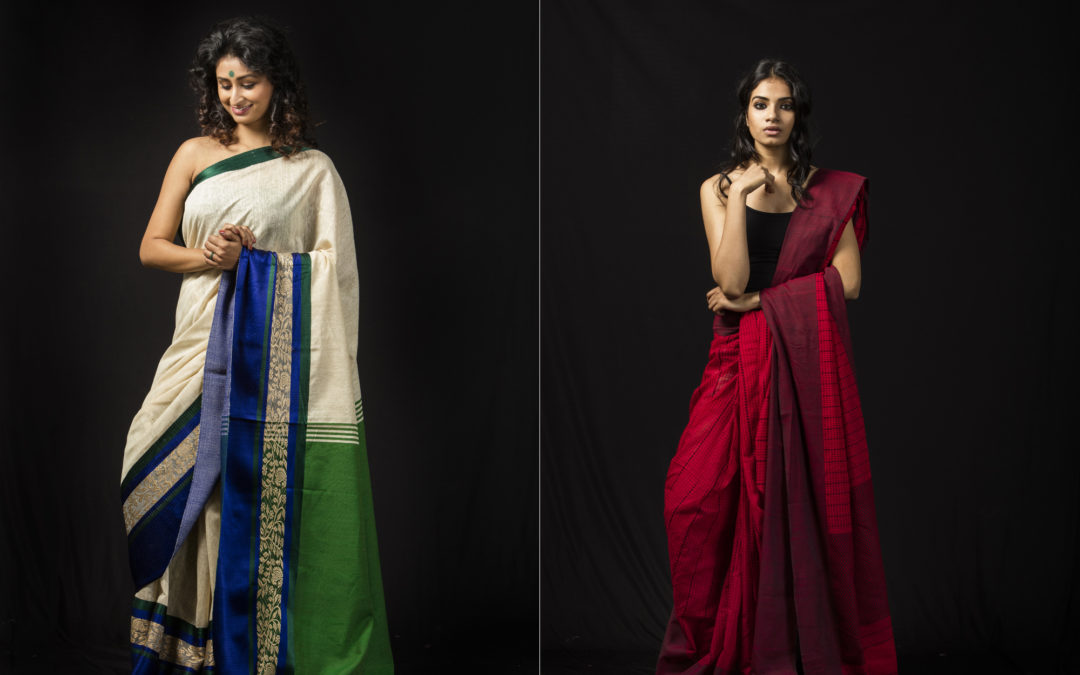
by admin | Sep 13, 2017 | archives
An eclectic mix of cotton and linen sarees in contemporary hues- Suchismita’s latest collection celebrates the spirit of freedom in fashion
Leave your name and email below along with what you are looking for in the message box. Suchismita will get back to you asap.


 Did you have any special prep or colour palette in mind when you thought of doing this?
Did you have any special prep or colour palette in mind when you thought of doing this?

 Specifically, Gustav Klimt’s ethos of mystery and sensuality has played a prominent role in Suchismita’s creations.
Specifically, Gustav Klimt’s ethos of mystery and sensuality has played a prominent role in Suchismita’s creations.


 said the famous designer Coco Chanel.
said the famous designer Coco Chanel.

 n fun!
n fun! e , saree always took the foremost place specially for ashtami anjali and bijaya dashami immersion/bhashan… rest of the days would depend on whatever was in vogue. But since childhood, I have always preferred tailor made clothes, choosing the particular cuts, collars and their detailing by myself. That is probably why, as a designer too I believed in developing a personal style than following fashion blindly.
e , saree always took the foremost place specially for ashtami anjali and bijaya dashami immersion/bhashan… rest of the days would depend on whatever was in vogue. But since childhood, I have always preferred tailor made clothes, choosing the particular cuts, collars and their detailing by myself. That is probably why, as a designer too I believed in developing a personal style than following fashion blindly.

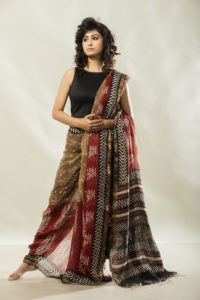
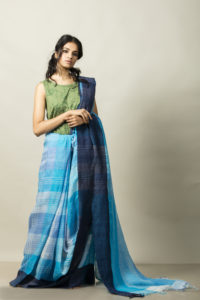
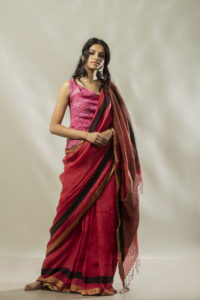
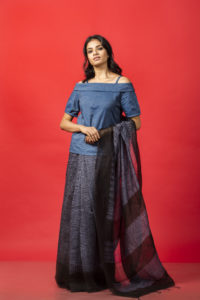
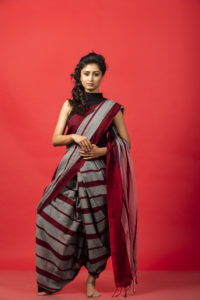
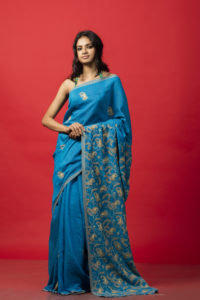
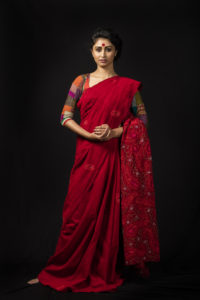
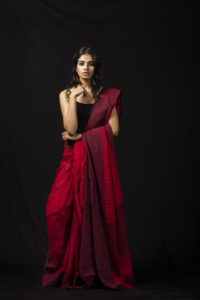

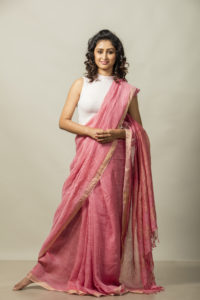
Recent Comments